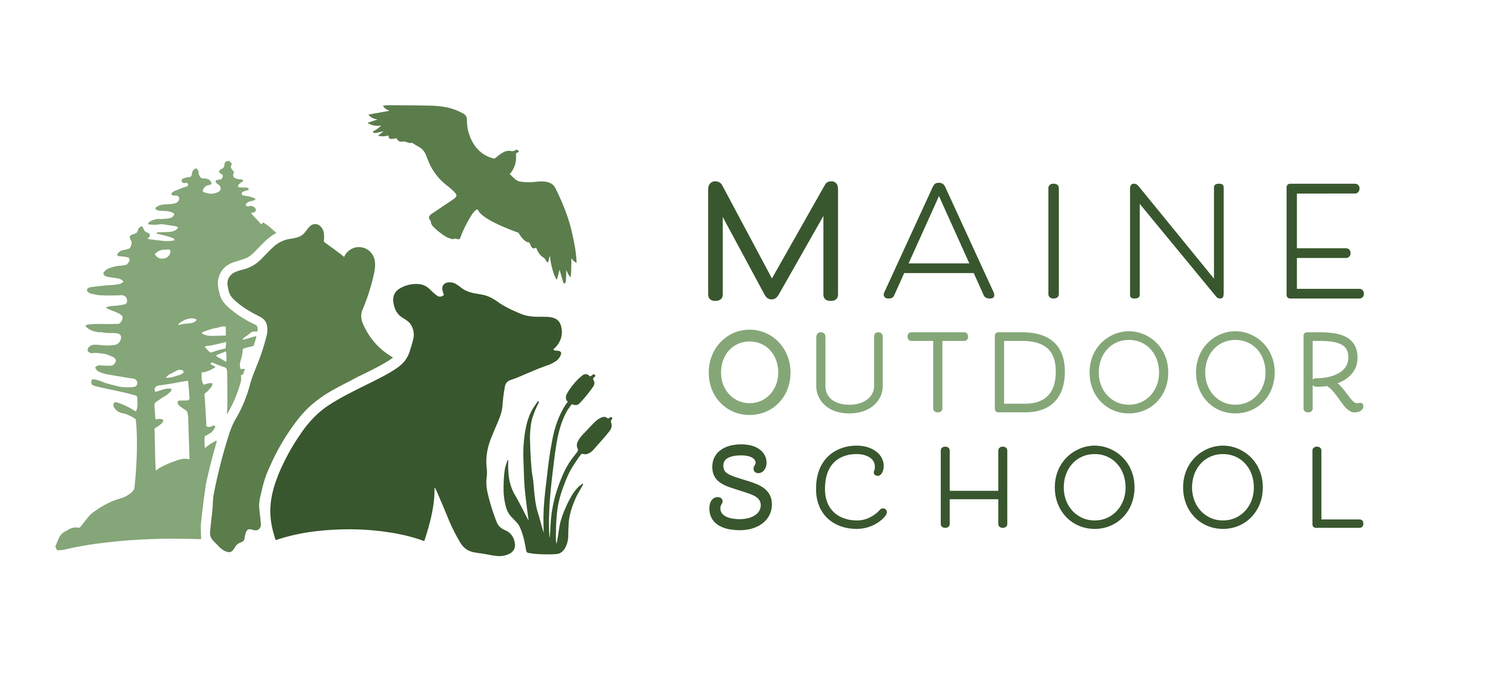The Outdoor Insider
Maine Outdoor School's Quarterly E-Newsletter
Issue #29
January 2024
Most people know that getting outside is healthy and fun, but struggle with meaningfully bringing nature’s benefits into their personal lives, classrooms, or organizations. That’s where we come in.
OWL Outing Participants at the Forest Stewardship Program
Airline Community School students studying ice
Narraguagus High Schoolers on a field trip up Schoodic Mountain
Jonesport 1st graders on a December field trip
Co-Founders' Note:
This quarter was rife with activity at MOS, as usual. Program series are ongoing in eleven different schools, representing students in PreK-6th grade (except no 3rd-graders right now oddly–we’ll get some 3rd graders this winter, though)! We also did some special field trips for other 4th-12th-graders, five different public programs, and two different homeschool programs.
One special part of this quarter was getting to present at Island Readers and Writers’ Dear Teacher conference. Hazel’s workshop, which brought teachers and administrators from as far as New Brunswick and Monhegan Island, focused on the importance of taking students outside to learn. A couple participants summarized the truth about outdoor learning well: “Outdoor ed is accessible and can be modified and tweaked to fit any program!” and “Anything can be taught outside.”
Don’t forget to get outside yourself, even during this darker, colder part of the year. There’s so much to see and do, and you’ll thank yourself for it afterwards, promise!
~Hazel and Joe
Tracks:
Taught program series at eleven schools!
Led a geology program and water cycle program for a local homeschool group.
Presented a workshop at Island Readers and Writers’ “Dear Teacher” Conference.
Brought several MSAD 37 4th-12th graders up Schoodic Mountain and down Birch Point to build observation and teamwork skills.
Guided 3 OWL outings: foraging at Hidden Ponds, learning about mosses, lichens, and algae at Backfield Park and a special all-day forest stewardship program at Machias River Preserve.
Led WHRL’s Inspiration & Insight: A Women’s Nature Retreat.
Had our 3rd Annual New Year’s Eve Sunset Hike with Crabtree Neck Land Trust.
Did you see our 2023 Year in Review Infographic? Please check it out on our Facebook page.
Check out the “MOS in the News” page to see where we’ve shown up in the press!
Community Commendations:
This quarter’s community commendation must go to Zabet NeuCollins, who transitioned out of her position at Women for Healthy Rural Living in December. You’ll recognize Zabet from our OWL-Outdoor Women Lead project, which Zabet and MOS dreamed up back in 2020. That program has grown into monthly women’s outings, several skills workshops, like orienteering and canoeing, and an annual girls’ camp, OWLette. She also collaborated with us on other MOS/WHRL projects, like the Summit for a Cause up Katahdin. Not only has Zabet been an exceptionally organized collaborator who was a joy to work with, but also she helped us significantly reduce the barriers that Washington County women and girls face to get outside and connected to this wonderful place.
An OWL participant put it best: “The monthly, free trips that Hazel and Zabet lead reach women who are otherwise overlooked by the outdoor recreation industry, including older women who are just beginning to have space and time for outdoor adventures after a life of supporting their families and careers…it creates a space for building strong relationships across the Downeast community, as much as building confidence in outdoor activities.”
We are really going to miss working with Zabet on WHRL projects! But we wish her best of luck (and maybe even a new MOS collaboration yet to be dreamed of?) at Heart of Ellsworth!
Biomimicry:
Ground cedars and all clubmosses are what scientists call sporophytes. When reproducing, rather than putting out seed-producing structures like fruits or cones, they instead extend club-shaped reproductive structures called strobili from their fronds. The strobili begin green but as they ripen will turn hay-colored and dry out. When hit by wind, rain, or the errant foot, hoof, or wing of a passing animal, spores puff out of the strobili and drift almost weightlessly across the landscape to produce another generation of clubmosses.
These spores are notably high in fat and indigenous peoples found that they burn rapidly. This characteristic is so significant that in the early days of photography, the spores of clubmosses were used to make a flash of light by setting a small amount ablaze.
This edition of Biomimicry is an adaptation of an episode of The Nature of Phenology, a radio show that Hazel and Joe produce weekly for WERU-FM. You can read or listen to entire past episodes here.
Resilience Tip:
Ice skating is a low-impact activity that exercises almost every major muscle group.
Learn more here.
What's Upstream:
Expect many more school programs this winter and spring! Curious about MOS coming to your school? Contact us here.
Come to one of our upcoming OWL Outings: birding, learning about winter adaptations, and phenology.
Schedule your own MOS experience! There is no better way to get outside this winter than with a guided snowshoeing adventure.
We’re already making plans for summer! Got an idea for a summer camp or other program? Let us know about it!
All MOS programs are fully customizable and suit explorers of any age.
Visit our website for ideas or contact us to schedule your unique experience.
Decorate your car, boat, camper, water bottle, laptop or anything else with this snazzy 6” x 4” vinyl bumpah stickah!
All proceeds support MOS programming. Order yours now.








